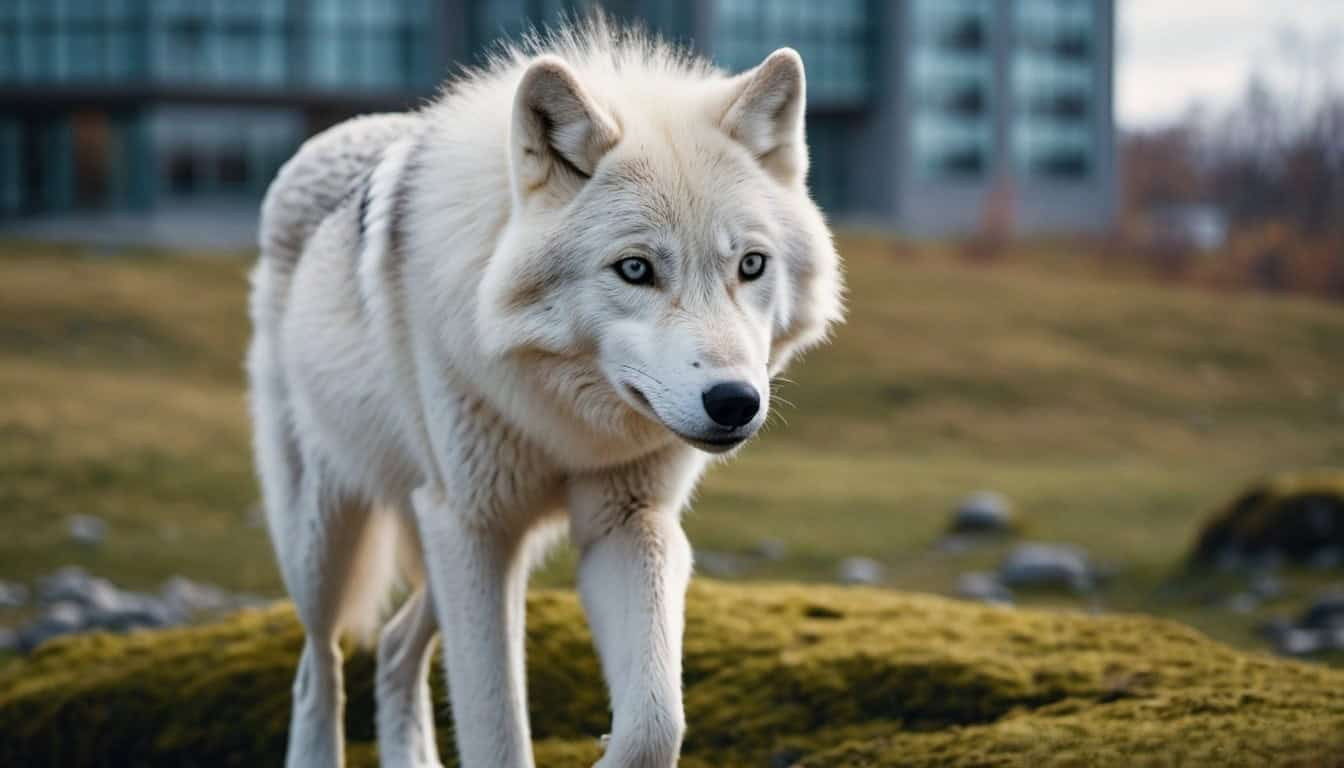Introduction
Educational institutions play a crucial role in Arctic wolf conservation through comprehensive educational programs, cutting-edge research, and active student involvement
This article explores how schools and universities contribute to raising awareness, conducting vital research, and engaging students and communities in conservation efforts. We will delve into the specific methods and initiatives that have made significant impacts on the preservation of Arctic wolves
Educational Programs and Awareness
Educational programs are fundamental in fostering awareness and understanding of Arctic wolf conservation
By incorporating conservation topics into the curriculum, schools and universities can shape the next generation of conservationists and environmental advocates
Raising Awareness through Curriculum
Incorporating Arctic wolf conservation into the curriculum can significantly impact students’ understanding and awareness of these endangered animals
Educational institutions often introduce topics related to Arctic ecosystems, the role of predators like the Arctic wolf, and the threats they face due to climate change and human activities. Courses may include biology, environmental science, and wildlife management, all emphasizing the importance of preserving Arctic wolves
In 2019, a study by the National Wildlife Federation found that students who participated in wildlife conservation courses showed a 30% increase in their understanding of ecological interdependence and conservation strategies
Such educational efforts ensure that students are well-informed about the critical issues facing Arctic wolves and are prepared to contribute to their preservation
A notable example is the curriculum developed by the University of Calgary, which includes specific modules on Arctic wolf ecology and conservation strategies. These modules cover the impact of shrinking habitats, the importance of maintaining genetic diversity, and methods to mitigate human-wildlife conflict
By integrating these topics into standard coursework, students gain a comprehensive understanding of the multifaceted challenges facing Arctic wolves and the conservation efforts required to address them
Community Outreach and Engagement
Educational institutions extend their influence beyond the classroom by engaging with local communities
Schools and universities often organize events, workshops, and seminars aimed at raising public awareness about Arctic wolf conservation. These activities can include guest lectures from conservation experts, community science projects, and wildlife observation trips
For example, the University of Alaska Fairbanks has a community outreach program that involves local residents in monitoring wolf populations and reporting sightings
This program not only helps gather valuable data but also fosters a sense of responsibility and involvement among community members. Engaging the public in conservation efforts ensures broader support and participation in preserving Arctic wolf populations
Additionally, many institutions collaborate with local schools to develop age-appropriate conservation programs for younger students. These programs often include interactive activities such as creating posters, participating in simulated wolf tracking, and learning about the cultural significance of Arctic wolves to indigenous communities. By starting conservation education at an early age, these initiatives aim to build a lifelong commitment to wildlife preservation
Online and Virtual Learning Initiatives
The rise of online and virtual learning platforms has expanded the reach of educational institutions in promoting Arctic wolf conservation
Virtual courses, webinars, and interactive modules allow students from around the world to learn about Arctic ecosystems and conservation strategies. These platforms can provide virtual field trips, where students can observe Arctic wolves in their natural habitat and interact with researchers in real time
Programs like Coursera and edX offer courses on wildlife conservation that include modules specifically focused on Arctic predators. By leveraging technology, educational institutions can educate a global audience, inspiring more people to engage in Arctic wolf conservation efforts
For instance, the World Wildlife Fund (WWF) offers an online course that includes a section on Arctic wildlife, where students can learn about the specific challenges Arctic wolves face due to climate change
Virtual reality (VR) experiences also play a role, with applications that simulate the Arctic environment, allowing users to “walk” through the tundra and observe wolves in a realistic setting. These technological innovations make conservation education accessible and engaging, promoting widespread awareness and action
Research and Field Studies
Research and field studies conducted by educational institutions play a pivotal role in understanding and preserving Arctic wolf populations. Universities and research centers engage in various projects that contribute to the scientific knowledge necessary for effective conservation strategies
Field Studies and Observations
Field studies are essential for gathering data on Arctic wolf behavior, population dynamics, and habitat use
Researchers from educational institutions often spend extended periods in the Arctic, observing wolves in their natural environment. These studies provide valuable insights into the wolves’ social structures, hunting patterns, and interactions with other species
For example, a long-term study by the University of Alberta has been monitoring the Arctic wolf populations on Ellesmere Island since the 1990s
This research has revealed critical information about pack dynamics, reproductive rates, and the impact of environmental changes on wolf behavior. By understanding these factors, conservationists can develop targeted strategies to protect these animals
In addition to direct observations, researchers use advanced technologies such as GPS collars and drones to track wolf movements and gather data on their range and habitat preferences. These technologies allow for more accurate and comprehensive studies, which are crucial for developing effective conservation plans
Genetic and Behavioral Research
Genetic research conducted by educational institutions helps in understanding the genetic diversity and health of Arctic wolf populations. Maintaining genetic diversity is vital for the long-term survival of any species, as it enhances their ability to adapt to changing environments and resist diseases
A study by the University of California, Davis, published in 2021, analyzed the genetic material of Arctic wolves from various regions
The research found that isolated populations had lower genetic diversity, making them more vulnerable to environmental changes and disease outbreaks. These findings underscore the importance of creating wildlife corridors and protected areas to ensure gene flow between populations
Behavioral research also plays a significant role in conservation. By studying how Arctic wolves interact with their environment and other species, researchers can identify potential threats and develop strategies to mitigate them
For instance, understanding the prey preferences and hunting strategies of Arctic wolves can help manage prey populations and reduce human-wolf conflicts
Case Studies and Success Stories
Case studies from various educational institutions highlight successful conservation efforts and provide models for future initiatives. These examples demonstrate how research and field studies can lead to tangible conservation outcomes
One notable success story is the collaboration between the University of Manitoba and local indigenous communities in the Canadian Arctic
This partnership has focused on integrating traditional ecological knowledge with scientific research to develop sustainable conservation practices. As a result, there has been a significant improvement in wolf population monitoring and habitat protection efforts
Another example is the work done by the University of Tromsø in Norway, which has been studying the impact of climate change on Arctic wolf populations. Their research has led to the implementation of conservation measures that address the challenges posed by melting ice and changing prey availability
These measures include establishing protected areas and working with local governments to reduce human disturbances in critical habitats
These case studies not only demonstrate the effectiveness of research and field studies in Arctic wolf conservation but also highlight the importance of collaboration between educational institutions, local communities, and government agencies
Student and Community Involvement
Student and community involvement is crucial for Arctic wolf conservation
Educational institutions play a key role in mobilizing students and local communities to participate in conservation efforts, thereby fostering a sense of responsibility and stewardship towards wildlife and the environment
Student-Led Projects and Campaigns
Student-led projects and campaigns are instrumental in driving Arctic wolf conservation initiatives. Universities and colleges often encourage students to develop their own conservation projects, providing them with the resources and support needed to make a tangible impact
For example, students at the University of British Columbia launched a campaign called “Wolves of the North,” aimed at raising awareness about the threats facing Arctic wolves
This campaign included social media outreach, educational workshops, and fundraising events to support ongoing conservation efforts. The initiative not only educated the public but also empowered students to take an active role in wildlife conservation
Student-led research projects are also significant. At the University of Alaska, students have conducted studies on the effects of climate change on Arctic wolf prey availability
Their findings have contributed to a broader understanding of the challenges faced by Arctic wolves and have informed conservation strategies to ensure the stability of prey populations
Training in Wildlife Management
Educational institutions provide comprehensive training in wildlife management, equipping students with the skills and knowledge needed to work in conservation. These training programs often include coursework, fieldwork, and internships, offering hands-on experience in wildlife research and management
Programs such as the Wildlife Conservation and Management degree at the University of Arizona include specialized courses on predator ecology, conservation biology, and wildlife law
Students are trained in techniques such as radio telemetry, wildlife tracking, and population modeling, all of which are essential for effective Arctic wolf conservation
Field training is a critical component of these programs. Students participate in field courses where they learn to conduct wildlife surveys, monitor habitats, and implement conservation plans. This practical experience is invaluable, preparing students for careers in wildlife management and conservation
Partnerships with Conservation Organizations
Educational institutions often form partnerships with conservation organizations to enhance their conservation efforts. These collaborations provide students with opportunities to work on real-world conservation projects and gain experience in the field
One notable partnership is between the University of Calgary and the World Wildlife Fund (WWF). This collaboration involves joint research projects, student internships, and public education campaigns focused on Arctic wolf conservation
Through this partnership, students have the chance to work alongside experienced conservationists, contributing to significant projects such as habitat restoration and wildlife monitoring
Additionally, the University of Toronto has partnered with the International Wolf Center to offer students internships and research opportunities. These partnerships allow students to engage in fieldwork, contribute to conservation initiatives, and develop professional networks within the conservation community
Partnerships with local indigenous communities are also crucial. Many educational institutions work with indigenous groups to incorporate traditional ecological knowledge into conservation practices
This approach not only respects the cultural significance of Arctic wolves to indigenous peoples but also enhances the effectiveness of conservation strategies
Conclusion
Educational institutions are vital in Arctic wolf conservation through their multifaceted roles in education, research, and community engagement. By integrating conservation topics into their curriculums, schools and universities raise awareness and foster a deeper understanding of Arctic wolf conservation among students and the broader community
Research initiatives, including field studies and genetic research, conducted by universities contribute significantly to scientific knowledge and inform effective conservation strategies. Moreover, student-led projects and partnerships with conservation organizations demonstrate the active involvement of students and communities in preserving Arctic wolves
Through comprehensive educational programs, innovative research, and active student and community participation, educational institutions not only contribute to the immediate conservation of Arctic wolves but also help to cultivate the next generation of conservationists dedicated to protecting these majestic animals and their fragile Arctic habitat










